Updated:
Photo: iStockSo, you’ve decided to install winter tires on your vehicle this season. That’s a prudent decision! Especially if you’ve chosen snow tires over all-weather tires during the cold months. But as you are in the market searching for winter/snow tires, you might be scratching your head a little considering there are several types with their own tread design and rubber compound offering varied performance on ice and snow.
If you have the money to buy winter tires which are typically known to be expensive, you are all set for the wintertime. However, if you are a cash-strapped driver who is not very comfortable with a new set of tires usable for a quarter of a year, you’ll have to fork out some extra funds.
Luckily, you have two options if you want to save on proper winter-rated tires; buy used or an affordable set of tires. Let’s find out which option would best suit you.
Purchasing used winter tires seems like a good idea for most during these tough economic times. Just query Google, and you will find many used winter tire listings on various classified sites.
Photo: iStockTypically, the deals are outstanding as most sellers would be happy to offer up to a 50% discount, often for rubber used for just one season. It usually happens when someone has purchased a new ride, and their old winter tires are not the right fit.
That said, you need to be very careful before purchasing secondhand tires. In fact, with used tires, you have to be extra cautious because a worn-out rubber can pose an absolute disaster on a snowy, icy road.
“There is a lot of unknown risk when it comes to the quality and lifespan of used tires. Some may only last a single season before needing another replacement, while others may have a few years of life left on them,” Mark Pereira, Director of Marketing for Sailun Tire North America tells us.
“The cost savings of buying used tires might not be significantly lower than deciding to buy a brand new set of affordable winter tires, especially when you consider a value based tire…”
Mark Pereira, Director of Marketing for Sailun Tire North America
He adds that used tires are often removed from a vehicle for a reason such as damage, uneven wear, bulges, cracks, impact, punctures and might be unsafe.
So what might look like a great deal could be concealing a hard past, and you have no way to look into the internal structure of the rubber. The tire could be driven overloaded, on long routes without adequate air, or at breakneck speeds. Over time, the structure could be waned and blow out on the road.
These are a few things you can’t essentially see by just examining the tire, so it is wise to bite the bullet and purchase a new set of winters.
Winter tires may seem more like a niche, speciality product with a high price tag for most consumers. But there are some terrific, budget-friendly options on the market.
But there are some terrific, budget-friendly options on the market.
“The cost savings of buying used tires might not be significantly lower than deciding to buy a brand new set of affordable winter tires, especially when you consider a value based tire brand like Sailun Iceblazer winter tires, as Sailun offers a value-packed line of high quality tires that are priced up to 40 percent less than competing big name new tire brands,” Mark Pereira explains.
“Sailun winter tires have a proven track record, with over 1-Million Canadian drivers and counting using Sailun Iceblazers to safely and confidently get through winter.”
However, if you still want to take the plunge on secondhand snow rubber, we suggest you lookout for the following crucial aspects.
While a secondhand winter tire can last up to 4-5 seasons, we recommend 2 to 3 years old ones. However, remember that even with adequate tread, these tires will not provide as good performance and safety as you get with new rubber.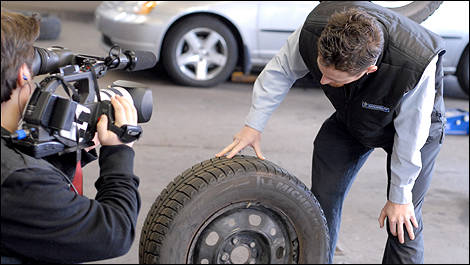 The tire rubber starts weakening and loses its elasticity with time.
The tire rubber starts weakening and loses its elasticity with time.
The secondhand tires should fit your car. To know which size is compatible with your vehicle, check the owner’s manual. If you want to change the size, we recommend purchasing new rims too. It will evade tire-tear during installation and uninstallation.
Purchase a tire tread-depth gauge, find the original tread depth on the tire maker’s website, and make sure the tread depth is more than 5/32”, which is a total minimum for winter driving.
You need to consider so many other things while buying used winter tires, and you will still not be sure if they are worth the money and risk you are taking.
What if you can get new winter tires that are affordable and available at a discounted price before the winter season starts? Well, reasonably priced winters are now accessible, and right now, almost all retailers are offering deals on them, so it is wise to buy brand-new and enjoy the maximum performance, handling, and safety on the snow-packed roads.
Here’s our guide of the best winter tires, including budget-friendly options.
Driving around town with an unwanted set of snow tires in my trunk, I felt like a thief who had just pulled off a jewelry heist and needed to sell his hot merch. Quickly. Bend is the only place I’ve ever lived in where snow tires are necessary—thanks to the poor quality of plowing, not nessarily the quantity of snow. And so, each fall and spring, I pay about $75 to have tires swapped from snow to all season and back. Last week, my friendly tire guy told me that my snow tires were just about shot. They charge $3 per tire to dispose of them, and, at least to my eyes, it looked like they still had a bit of life left in them.
I wasn’t going to pay $12 to throw something away, so I Googled “Sell used tires in Bend, Oregon,” and found a used tire shop in an industrial area filled with auto repair shops and warehouses. I called and the guy who answered seemed eager to see what I had. “Come on down,” he said, Bob Barker like. I pulled up and was greeted by a Mexican man of forty odd years, perhaps older, with an ample belly. He was perspiring in the 50-degree sunshine and wasted no time fingering my tires in the trunk, carefully running his hands around them like a child petting a reptile at a zookeeper’s demonstration.
I called and the guy who answered seemed eager to see what I had. “Come on down,” he said, Bob Barker like. I pulled up and was greeted by a Mexican man of forty odd years, perhaps older, with an ample belly. He was perspiring in the 50-degree sunshine and wasted no time fingering my tires in the trunk, carefully running his hands around them like a child petting a reptile at a zookeeper’s demonstration.
“How much you looking to get out of these? he said, squinting at me with a grave expression on his face, as though we were discussing casket options for a loved one.
I never like to show my hand in a negotiation, so I avoided his question. The truth was that I would have taken $10 for the lot of them, and was thrilled that he seemed willing to pay me anything for them.
“Make me an offer,” I countered.
“But how much do you think they’re worth?” he said, trying hard to draw a figure from me.
I felt like I was selling a fine oriental rug in Istanbul’s Grand Bazaar.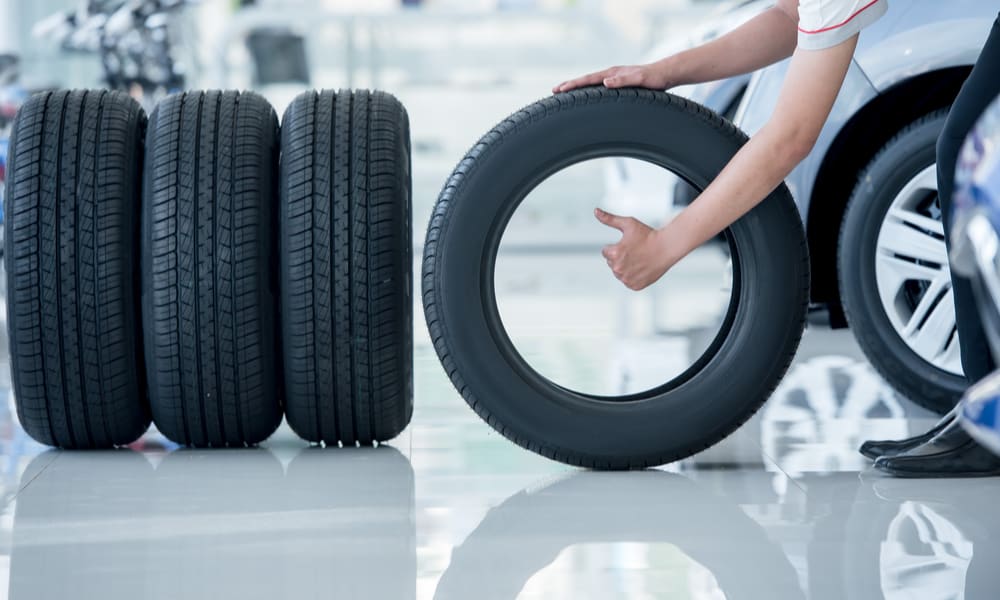
“Just make me a reasonable offer,” I said.
He put his hand on one of the tires and turned to me with some sad news that was written all over his face. “I can’t sell these tires,” he said. “It’ll cost you $3 each to dispose of them.”
The son-of-a-bitch was apparently just winding me up, toying with me for his own amusement. He had no intention of purchasing the tires; he just wanted a good story to bring home to his friends and family. Dumb bastard wanted $50 for a bunch of old snow tires. And at the end of the winter, no less!
“I think these tires still have at least one season left in them,” I said, feeling hurt, like a boy whose pet iguana had failed to place in the county fair.
He turned his eyes back to the tires in my trunk for a moment, cocked his head back and forth for a moment as though he was swishing the proposition back and forth in his head and said, “Maybe. But I can’t sell these things. You wanna pay to get rid of them?”
Stung and annoyed, I could not bring myself to pay this cruel man $12. I’ll pay him to “dispose” of them and he’ll turn around and sell them! I called another tire shop, feeling like a kid who couldn’t get a prom date, and they advised me to list them for $10-15 each on Craigslist. “You never know,” the guy said, “you could find someone who is desperate and needs some cheap tires.” I did just that.
I’ll pay him to “dispose” of them and he’ll turn around and sell them! I called another tire shop, feeling like a kid who couldn’t get a prom date, and they advised me to list them for $10-15 each on Craigslist. “You never know,” the guy said, “you could find someone who is desperate and needs some cheap tires.” I did just that.
My sorry, spurned tires are now resting on the side of my house, feeling unloved and in need of a good home.
Consumer disputes over the age of tires have not subsided for several seasons. Buyers are excited that the warranty period for tires is limited to 5-6 years according to GOST, and after the expiration of this period, the rubber becomes unusable.
Is this really the case, read this article.
Manufacturers of most brands on their products set Shelf life is 5 years and service life is also 5 years .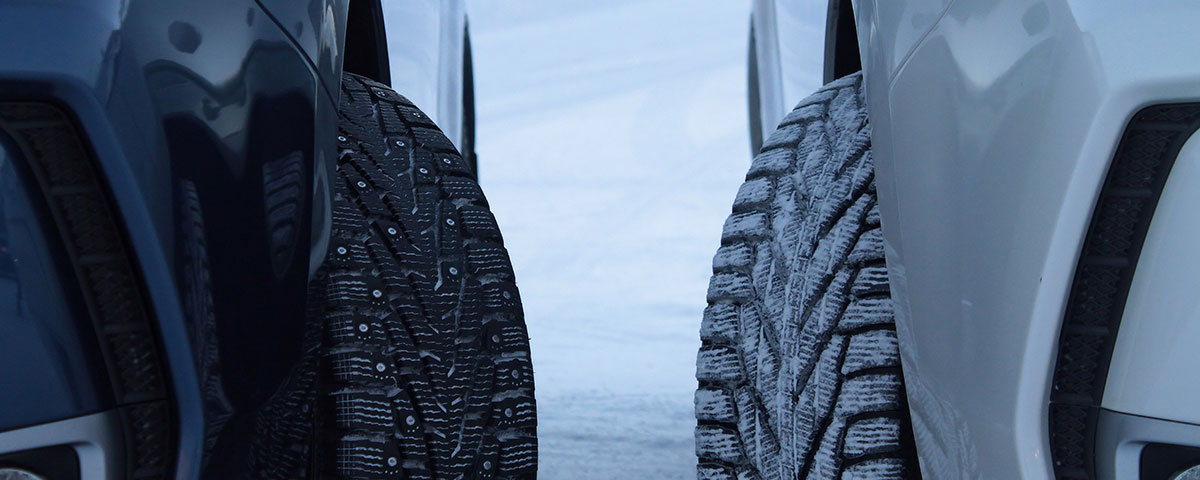
The shelf life of a tire is the period during which it retains its performance when properly stored.
The end of this period does not mean that the tires have become unusable . A shelf life of 5 years is given by manufacturers because, by law, they cannot set a shelf life higher than the service life. Tires over 5 years of storage cannot be called damaged or defective, their technical characteristics may be slightly reduced. American researchers argue that the period of storage of "shoes" must be at least 10 years. Experts from Germany are sure that it cannot exceed 6 years.
The expiration date of tires is the warranty period during which the manufacturer is responsible for the quality and condition of the tire if it was used for its intended purpose without violating the operating rules.
According to Russian legislation (GOST 5513, GOST 4754-97) , the service life of tires is 5 years from the date of manufacture.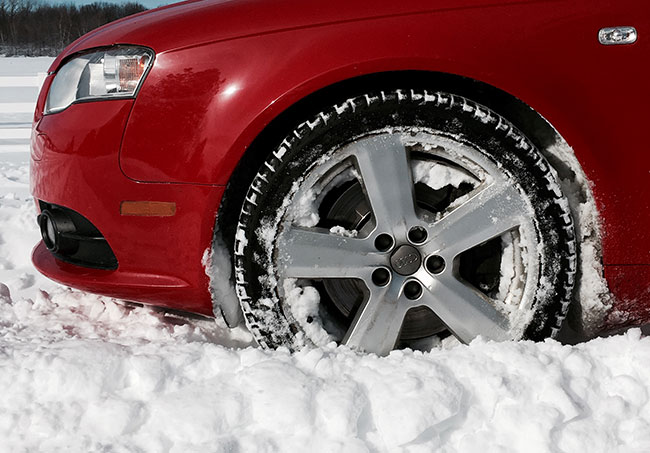
How can I find out the date of manufacture of tires?
You can find out the age of tires by a special DOT code. Tires manufactured after 2000 in the DOT code contain two pairs of numbers, where the first pair indicates the week number of the year, and the second pair indicates the year. Earlier tires before 2000 have 3 numbers in their composition, where the first two digits are the week number, and the last one is the year (see the transcript in the photo).
Determination of the average shelf life of a tire according to GOST and operating conditions.
- The symbol ZR denotes tires for high-speed cars. They are recommended to be used at speeds over 240 km/h. up to 6 years
- Tires with the H symbol are used at a maximum speed of 210 km/h. within 5 years.
- The sign S symbolizes the maximum permissible speed of 180 km/h. and operational period of 4-5 years.
Most tire manufacturers do not agree that tire life is limited to 5 years. Each company has its own opinion on this matter. We analyzed several of them and the information they posted on their official websites.
Each company has its own opinion on this matter. We analyzed several of them and the information they posted on their official websites.
Michelin
The French tire manufacturer Michelin has become famous for its active fight against the perception of the rapid aging of tires as a perishable product. Her information campaign "Tires Are Not Bananas" created a lot of noise in the automotive environment. According to the representative office, several test trials were carried out in Saudi Arabia, South Korea and Germany. As a result of testing, no difference was found between new tires and tires stored for 3 years. They were tested for various characteristics such as rolling resistance, high speed durability, etc. Tires with a year life were approximately equal in performance to 10-year unused tyres.
Michelin focuses the attention of car owners on the fact that tires are not a perishable product, their shelf life is not as important as the service life is important, starting from the date the tires are installed on the rims. It is from this moment that the tire is subjected to all tests: pressure, temperature changes, wear, contact with uneven and sharp coatings, etc.
It is from this moment that the tire is subjected to all tests: pressure, temperature changes, wear, contact with uneven and sharp coatings, etc.
Continental
On the Russian official website of Continental, we found the following information on the expiration dates of tires.
“When a tire is stored in the correct position and under the recommended conditions, it will not lose its original balanced performance for 5 years from the date of manufacture of the tire.
A properly maintained, unused tire less than 5 years old can be sold as a new tire and used normally.
Continental recommends replacing all tires (including spares) with a sidewall date greater than 10 years.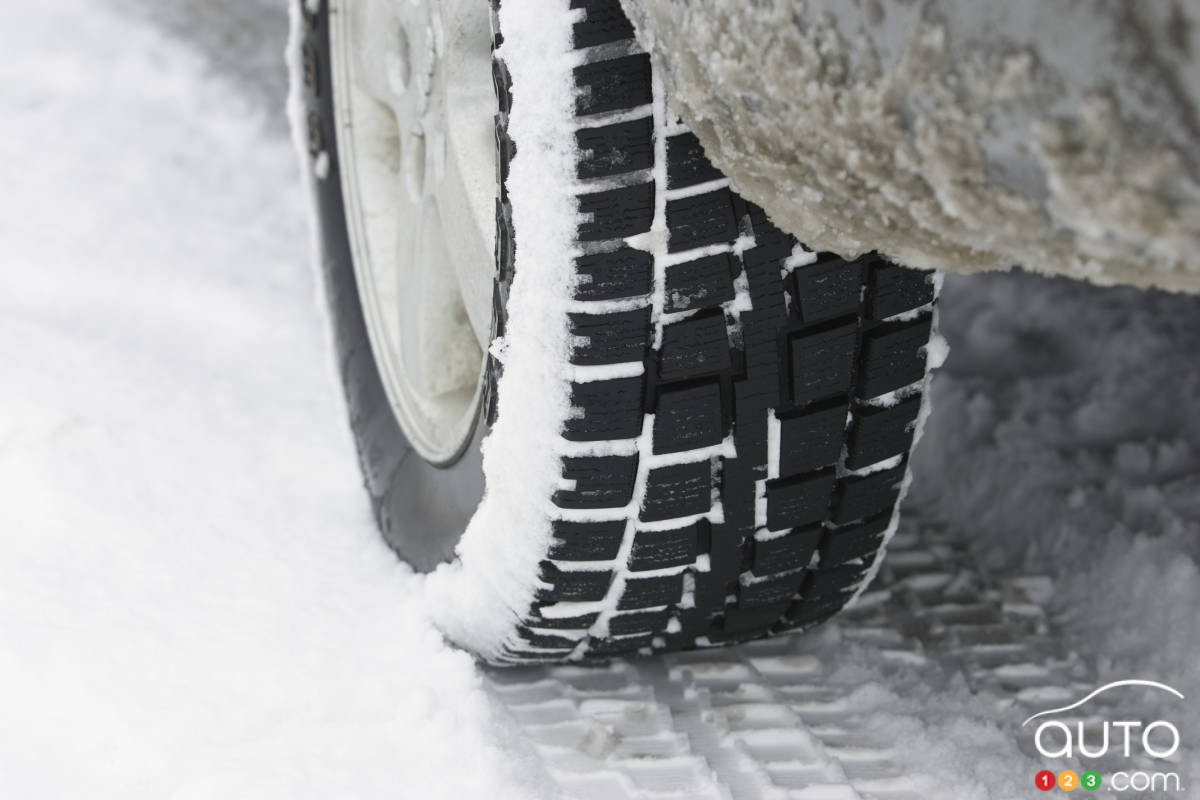
Nokian
The following information is posted on the Nokian official website:
“Tire life is not defined by law, but tires can only be considered “new” if they have been manufactured within the last five years. The recommended service life of tires is six years and the recommended maximum period is 10 years.
The opinion of our specialists, based on many years of experience, coincides with the opinion of manufacturers: the shelf life is 5 years + the service life is up to 10 years. Moreover, more "adult" tires, in our opinion, are of better quality.
To keep tires as long as possible, they are stored in compliance with all rules and recommendations. The main condition is a cool, ventilated, darkened room away from oils, paints, ozone, and heat sources.
Rubber products tend to lose their performance over the years. To prevent and slow down this process, manufacturers add polymers to the rubber compound. They prevent oxidative processes that occur due to the interaction of protectors with oxygen and ozone.
They prevent oxidative processes that occur due to the interaction of protectors with oxygen and ozone.
The following are the main conditions for the proper storage of tires in accordance with GOST 24779-81:
Maintaining a constant regime without sudden jumps, slight temperature fluctuations from -30°С to +35°С are allowed;
Provide a low humidity level of 50-80% in a dry, ventilated cool room;
Avoid direct sunlight, use darkened hangars, shield heat sources;
Keep away from sources of heat;
Tires should not come into contact with corrosive, copper materials.
Avoid kinking, loading or positioning on an uneven surface.
Avoid contact with oils, organic solvents, acids, alkalis, fuels and lubricants on the tire surface. It is forbidden to lay tires on a wet and dirty surface.
In the warm season, when storing tires outside, they should be covered with light-tight material and raised above ground level to ensure ventilation and prevent the occurrence of the greenhouse effect.
Storage on reflective, light and heat absorbing surfaces is prohibited.
Keep away from chemicals, oils, paints, open flames, electric motors that produce ozone.
Used tires must be washed and dried.
Tires without rims should be stored upright.
The service life depends on many factors: the load on the car, the quality of the roads, the driving style, the distance traveled, tire damage, etc. To increase their service life, follow these rules:
Check tire pressure every 2-3 weeks. With reduced pressure, tire wear increases by the equivalent of a % reduction. For example, a 15% reduction in pressure can result in a 15% reduction in service life. Inflated tires are less scary.
The wear of the front tires is always significantly higher than the rear ones, so it is recommended to swap them after some time, carefully watching the direction of the tread pattern and the direction of rotation.
Proper alignment of tires in relation to rims. If the direction is not the same, then performance is significantly reduced.
To prevent damage to the sidewalls of tires, avoid close proximity to curbs and high ledges.
Wash off dirt from the surface of the rubber and from deep grooves with special cleaning agents.
Adhere to an even driving style without harsh brakes and quick starts.
Do not overload the car beyond the norm. 20% excess weight leads to a 30% loss of tire life.
Keep the wheels balanced and check the alignment angles annually.
The main condition for a long tire life is:
- high quality products,
- careful operation,
- proper storage of tires in the off-season,
- timely diagnosis.
The age of tires in standard storage is a minor non-determining factor that should not be taken into account when buying them.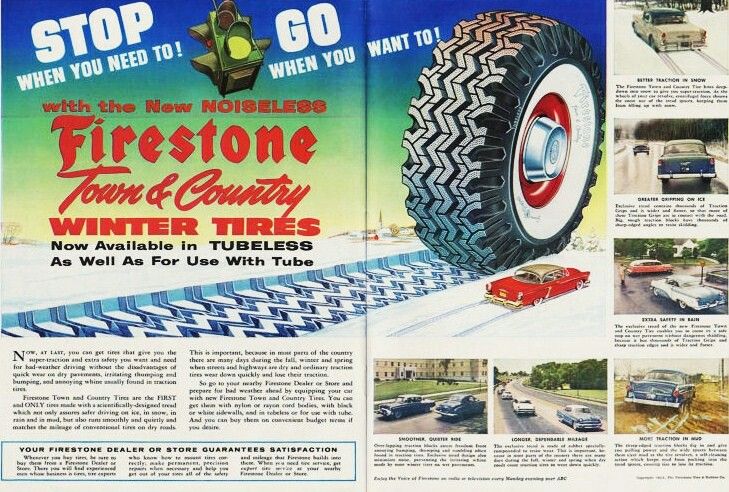
Previous article Next article
What are spikes and why are they needed?
Purpose of studs on winter tires
How many studs are on winter tires from different manufacturers?
How many studs are on winter tires of different sizes?
Conclusion
Choosing winter tires for the next year, drivers are actively studying ratings, expert reviews, reviews of other motorists. In each of these materials, you can find divisions into studded and non-studded tires. In the first case, special attention is paid to the wear resistance of metal inserts. To make it easier to choose the right tires and control the level of durability, attentive drivers sometimes ask themselves the question: “How many studs are on winter tires, and what does this parameter affect?”. In this article we will try to understand the features of modern studding, but it is worth mentioning right away that the exact number of inserts depends on the manufacturer and the specific model.
Studs are found exclusively on winter tires and are not allowed for use in every region. Metal inserts can spoil the road surface, and therefore in countries with warm winters they are completely banned.
The spike is a two-piece metal element.
The core of the inclusion or the so-called body. This is the part of the stud that is visible when visually inspecting the tires. The rod is responsible for holding the metal structure in winter tires. This part of the stud is made of light alloy and may have additional serrations that reduce the risk of flying out.
The core of the spike. This bulging part is of the greatest importance, as it provides traction on ice and packed snow.
Winter tire manufacturers are redesigning the carbide insert and body to provide better wear and grip. However, the weight of the spike is limited. In Russia, this parameter should not exceed 1.6 g. For tires manufactured in Finland, there is a stricter limit - 1. 1 g.
1 g.
The tasks of tires used in winter are reduced to the need to cope with snow porridge and mud, provide flotation in deep snow and efficient braking, fast acceleration on ice. To perform the latter function, spikes are used. They work on ice and packed snow, literally biting into the surface.
Obviously, the greater the number of metal inserts in studded tires, the more effective braking and acceleration. However, with the use of new technologies, some manufacturers have managed to achieve good performance with a small number of studs. The car is confidently controlled on a slippery road due to sipes and grip blocks on tires, an improved rubber compound.
As mentioned above, the number of metal inserts is regulated in different countries in their own way. The inclusion of studs in the design of the tire is only allowed in the Scandinavian and European countries. Asian regions do not welcome the use of metal hooks, but some manufacturers from Japan, Korea and China make similar models for import to countries with a cold climate.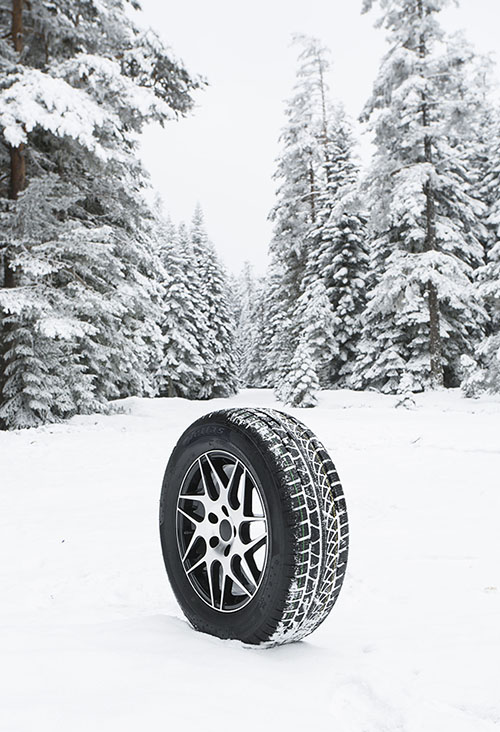 A striking example of such brands is Bridgestone, Yokohama. In various models from Asian plants, a large number of spikes cannot be seen. As a rule, the number of metal inserts does not exceed 130 pieces per tire.
A striking example of such brands is Bridgestone, Yokohama. In various models from Asian plants, a large number of spikes cannot be seen. As a rule, the number of metal inserts does not exceed 130 pieces per tire.
In the Scandinavian countries since 2009 there has been a regulation prohibiting the installation of spikes in quantities of more than 50 pieces per linear meter. However, this regulation has a caveat. A manufacturer can make more studs on their tires if they can prove that it does not harm asphalt and other road surfaces. Finnish brands hold the record for the number of holds. In some models, their number can reach 180 units.
Domestic manufacturers have no restrictions on the number of studs on tires produced. Therefore, in the models of Russian brands, you can find from 130 to 160 metal inserts.
The number of metal inserts ranges from 90 to 190 pieces. The exact quantity is an individual parameter, which is influenced by the design features and the technologies used.
This size is very common among budget cars. On winter tires Nokian Nordman 5 size R13, 110 studs were counted. It is worth noting here that according to generally accepted standards, the number of metal inserts on rubber of this diameter should be up to 90 pieces per wheel, but some manufacturers exceed this figure if it does not harm the road surface.
New cars of domestic production (Grant, Priora and others) are already equipped with R14 wheels, so this size is gradually replacing the 13th diameter. On winter tires Nokian Nordman 4 and 5 also managed to count 110 studs. Cordiant Polar has similar figures. Fewer studs for Gislaved Nord Frost rubber - 90, as it should be by established standards. Nokian Hakkapeliitta 8 - 165 tires became the leader in the number of metal inserts.
If you take the same Nokian Nordman 5, you can see that the number of spikes on the rubber does not change with increasing diameter. On the R15, in which budget foreign cars and domestic cars of a complete set are “shoeed”, there are still the same 110 pieces. The tendency to keep the same number of studs is also seen in Cordiant, Bridgestone, Gislaved, KAMA.
On the R15, in which budget foreign cars and domestic cars of a complete set are “shoeed”, there are still the same 110 pieces. The tendency to keep the same number of studs is also seen in Cordiant, Bridgestone, Gislaved, KAMA.
This diameter is common among class C foreign cars. Chinese Nexen with R16 diameter have 108 studs. Nokian Hakkapeliitta 9 has a record number of 172, while Nokian Nordman 4 and Pirelli Ice Zero have 130 each.
This tire is suitable for luxury cars and crossovers. Goodyear has 130 studded 17-inch tires with its UltraGrip Ice Arctic model.
This large size winter tire is used on SUVs and some SUVs. The number of spikes often exceeds 130 pieces. However, there are also models with a limited number. For example, Toyo Tires managed to count 100 spikes.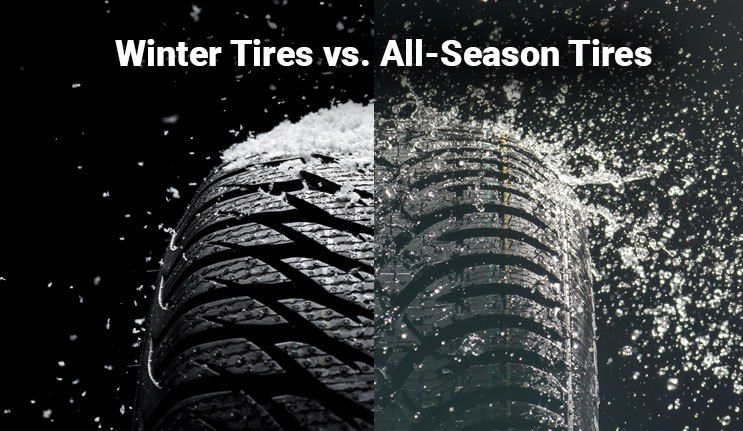
The average number of studs for rubber of different diameters can be found in this table.
| Wheel size | Number of spikes (pcs) |
| R13 | 90-110 |
| R14 | 90-110 |
| R15 | 110 |
| R16 | 100-180 |
| R17 | 130 |
| R18 | 100-160 |
As can be seen from the review of some popular models, tire size has little to no effect on the number of studs.
During operation, winter tires may lose their studs. The rate of wear of rubber depends on the quality of the chosen model and the characteristics of the road surface. According to current standards, studded winter tires can be used even if 40% of the metal inserts are retained.